An Owl and a Falcon
The rest of our visit to the farm
This post focuses on two raptor species we saw at the farm that afternoon: Burrowing Owls and American Kestrels. You may recognize this female American Kestrel from previous emails. This is the same bird I've seen regularly perched atop the CPI (Central Pivot Irrigation) system on this farm. In fact, she is so regular my friend has named her "Cleo" (for Cleopatra) because she is so pretty.
Just recently several Burrowing Owls have begun perching out in the open. We hadn't seen Burrowing Owls on previous visits here. Perhaps that is because during the winter, many female and immature Burrowing Owls migrate south. This owl was adjacent to its burrow which, like many in agricultural fields, is at the side and under an irrigation ditch. This Burrowing Owl did not appear very disturbed by our truck.
After a bit, it flew ahead of us and perched atop the irrigation ditch further down the road. As we approached, it still did not react for a while. Like other Burrowing Owls I've seen, it might be used to farm trucks moving up and down the road between fields. It remained still for a while and didn't drop down into its burrow or fly off.
But then, it did something different. It flew about ten feet into the field and disappeared in the alfalfa. Do you see the Burrowing Owl? I sure couldn't. We saw exactly where it went but it was well hidden among the vegetation. And it's right in the middle of this photo. I'm sure of it.....So we drove on.
We came across a different female American Kestrel. Like the Owl, this Kestrel also seemed comfortable playing tag with us by maintaining a short distance between herself and the truck but not flying away if the truck didn't move. She hopped from field to field, perching on top of the row of dead palmer amaranth plants between each field.
I think that Kestrels are among the prettiest of the birds around. She continued watching us, and I like each of the profiles she gave us. American Kestrels are the smallest of the six falcon species in the US. They are about the size of a Mourning Dove.
Both male and female American Kestrels have those two black slashes on their face. For more on American Kestrels, listen to Birdnote: https://www.birdnote.org/podcasts/birdnote-daily/american-kestrel
I was unable to get any shareable flight shots of this kestrel. She never flew high or wide, always staying low to the ground. I did capture this one shot of her landing on another palmer amaranth plant. The photo shows the typical falcon pointed wings and the orange and black barring on the female Kestrel's back and tail. She is spreading her tail to help slow her flight as she lands.
One more over the shoulder look back at us!
See the dark spots on the back of this American Kestrel's head? Those spots are "fake eyes" called ocelli. Ocelli is a Latin word meaning 'little eyes'. It is thought that those spots, by mimicking the appearance of eyes, serve to deter predators by giving the illusion that the Kestrel is watching them. Think of when your mother said she had "eyes on the back of her head". It's the same idea!
More on birds with these "false eyes" can be found at this Audubon site: https://tinyurl.com/msps3jz3


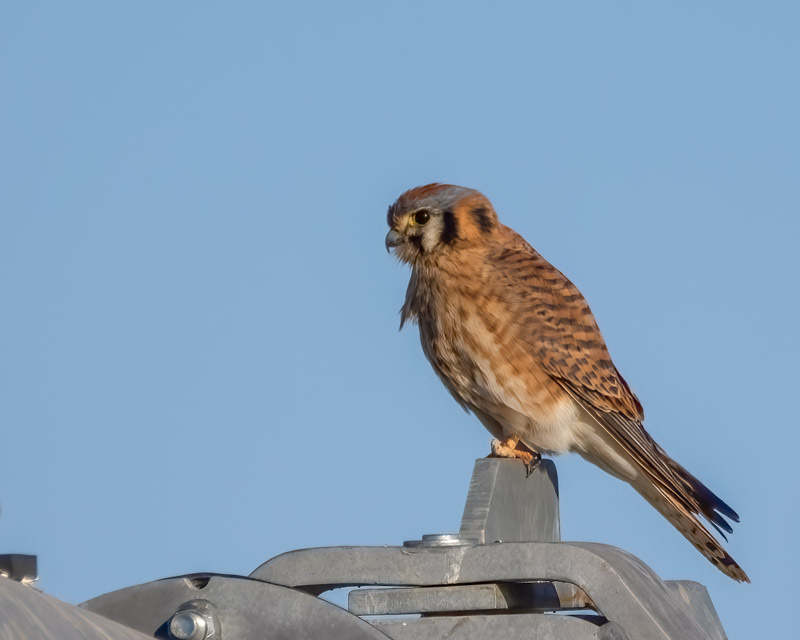
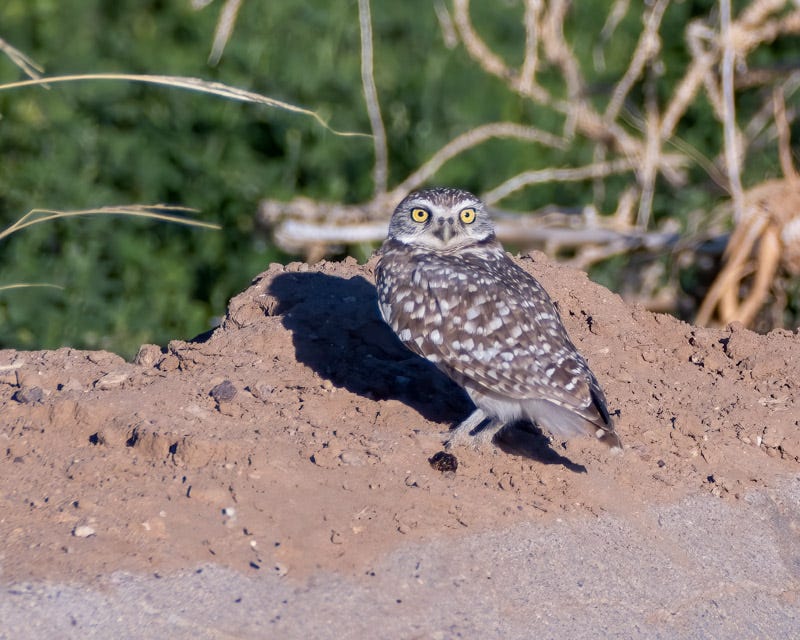



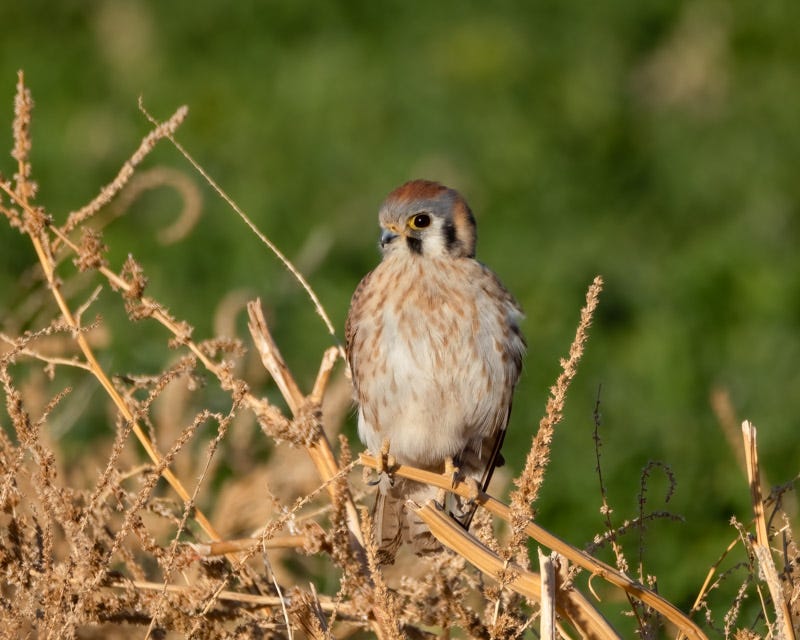
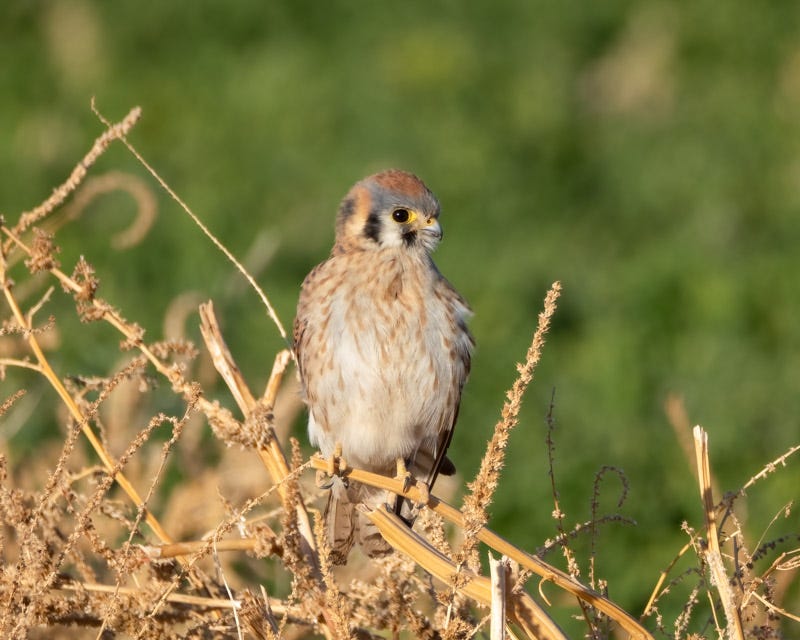

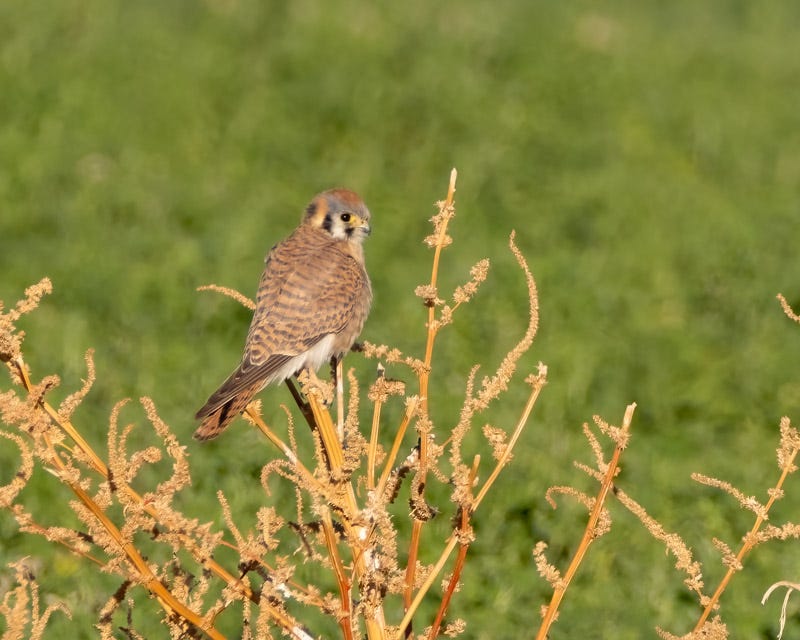

I agree, the kestrel is very beautiful. How do you know it’s Cleo?
I always love seeing pictures of owls. A majestic bird and one not often seen in my neck of the woods.